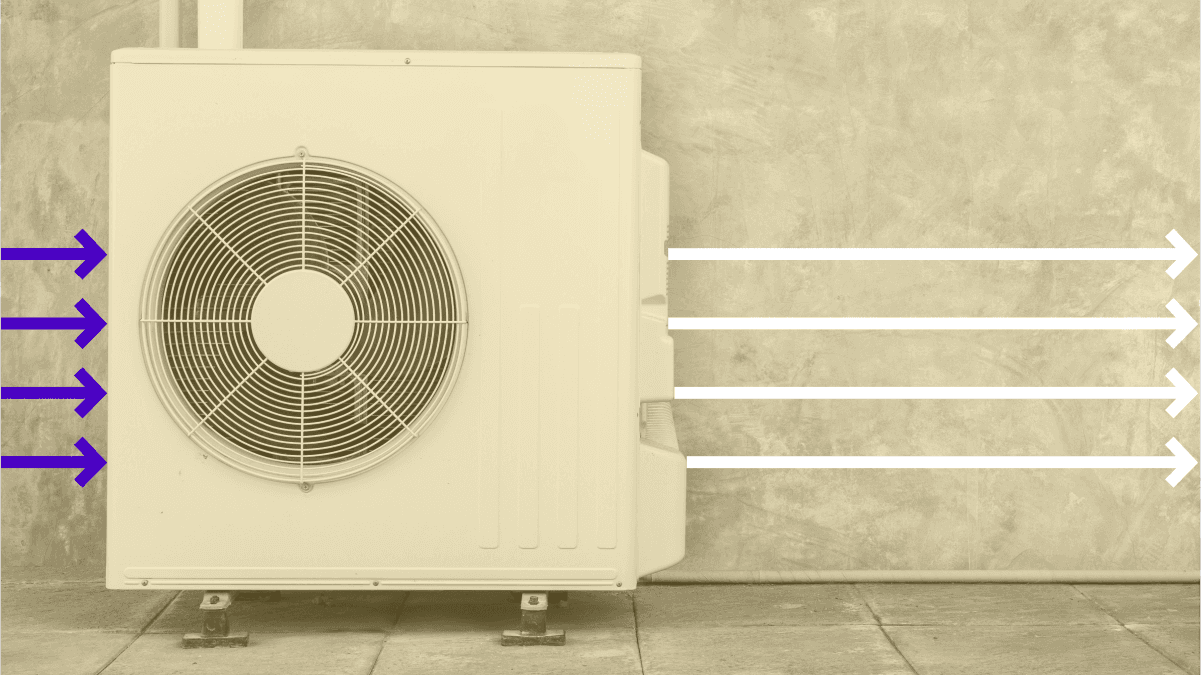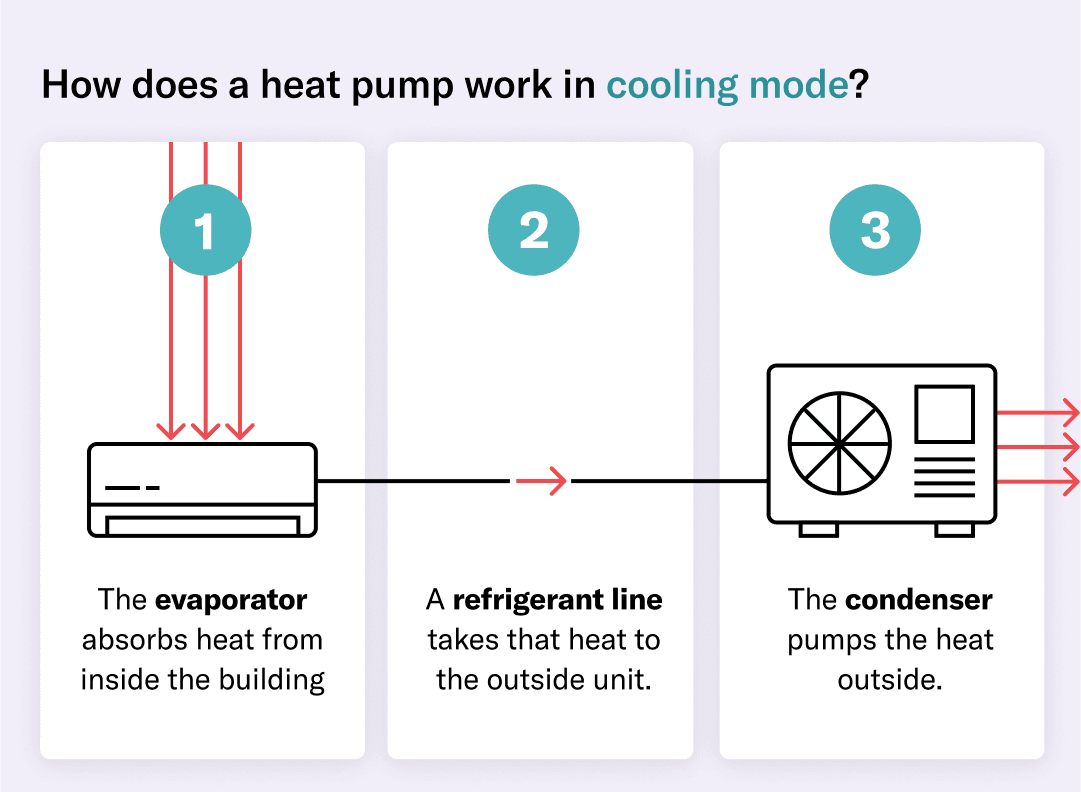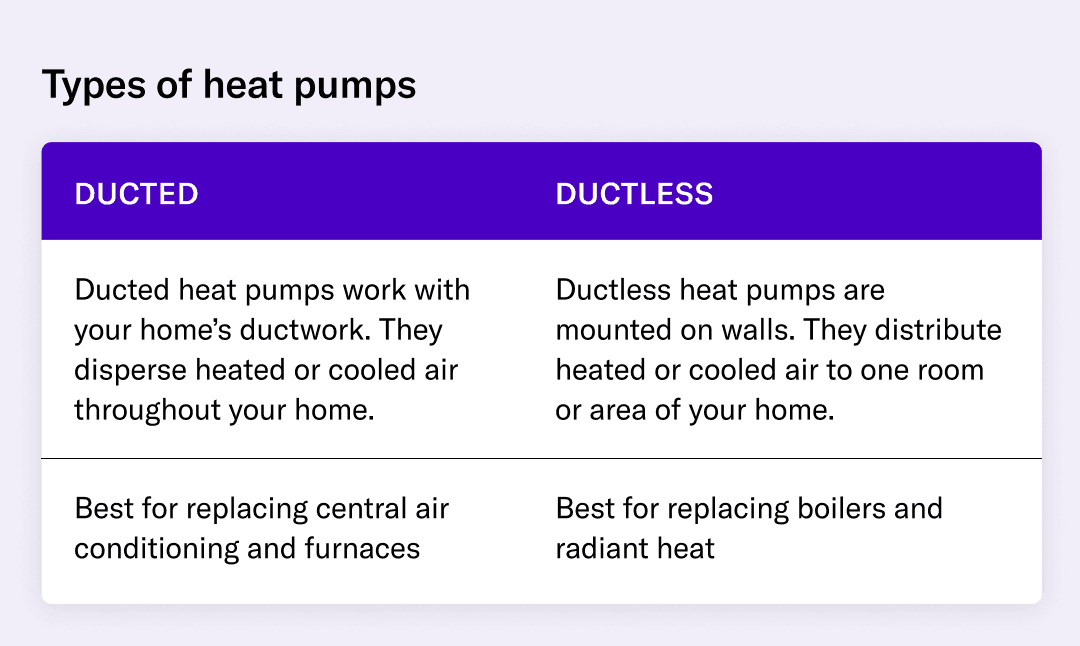How heat pumps work in the summer and winter
Inside this unassuming, amazing machine

A heat pump is an electric appliance that can replace both your traditional air conditioner and home heating system (like a furnace or boiler). Heat pumps use electricity to move heat from one place to another, rather than creating it. That makes heat pumps much more energy efficient.
In fact, heat pumps are 2 to 3 times more energy efficient than traditional heating systems such as fossil fuel furnaces and boilers or inefficient resistance baseboards. No matter where you live, heat pumps can easily heat your home in the winter and cool your home in the summer.
How heat pumps cool in the summer
In cooling mode, heat pumps are like air conditioners, moving the heat from inside your home to the outside. Heat pumps — especially mini-split systems — typically have a much higher efficiency rating than traditional air conditioners, meaning they use less energy to cool your home. (More like cool pumps, amirite?)

How heat pumps heat in the winter
In heating mode, heat pumps go into reverse and pump heat from the air outside your home to the inside. How does that work? Because heat is energy, there’s energy in the air even when it’s very cold outside.

Back in the day, heat pumps couldn’t handle cold climates. But now, thanks to some major technological advancements, heat pumps work great in the coldest parts of the world. As Consumer Reports writes, heat pumps “can keep your home toasty even amid bone-chilling cold, using far less energy than other types of heating systems.”
Two types of heat pumps
Heat pumps come in two main forms: ducted and ductless.
What are ducts? Ducts are tubes used to move air. (If you’ve ever seen a heist movie, ductwork is what burglars crawl through in the ceilings to steal precious jewelry or artworks from highly guarded interior rooms.) They are used for heating, cooling, and ventilation.

Ducted heat pumps use your home’s existing ductwork (or new ducts if needed) to disperse heated or cooled air throughout your home.
Ductless (or “mini-split”) heat pumps are easier to install where there is no existing ductwork. Ductless heat pump heads are usually mounted high on the wall, and each one serves one room or area of your home. Each head unit can be set to a different temperature, so if one member of your household runs hot or cold, you can adjust your settings so everyone is comfortable.
There are also window-unit heat pumps, which are an especially good option for renters.
How heat pumps keep your home comfortable
Heat pumps work best when they maintain a steady, even temperature all the time. You can set the temperature (even if it’s higher or lower than your boiler or old AC) and it will keep your home comfortable.
On a hot, humid day, heat pumps act like whole-home dehumidifiers, gradually taking moisture out of the air. Even if it isn’t hot — like on a humid fall day, for example — some heat pump models can function as dehumidifiers while keeping the temperature at a pleasant 70 degrees.
For more information about heat pumps, read Heat pump pros and cons.
Heat pumps are the best way to heat and cool your home, lower your electric bill, and get gas out of your home. Electrify your home with Rewiring America's free heat pump guide. Check it out.
First, a heat pump. Then your whole home?
We’ve launched a free tool to help you go all-electric. Make your plan. Maximize your savings. Get help along the way.
Start planning today